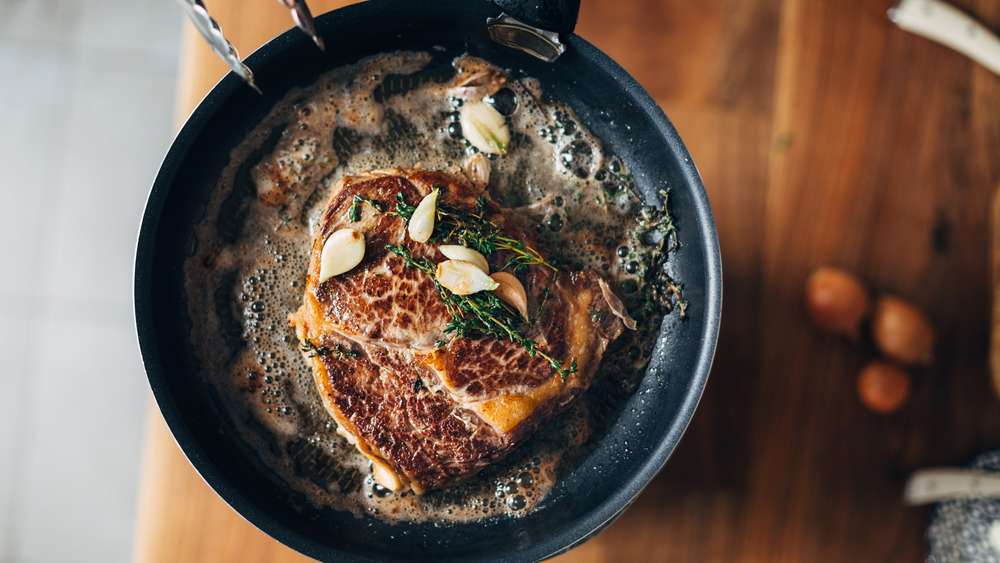Alton Brown Just Busted This Common Meat Cooking Myth
If you ask anyone for tips on the perfect, juicy steak, they'll rattle off what is pretty much common knowledge at this point: Season it with salt and pepper. Leave it pink in the middle. Let it rest. And last but not least, the rationale behind the magic: that searing steak "seals in the juices." But does it, really? If Alton Brown of Food Network fame has anything to say about this meaty trope, nope, WRONG.
In a recent Twitter post, Brown dropped this bomb: "Guys, here's some culinary truth you can count on: searing doesn't seal in juices." Wait, really? We decided to find out. It makes sense intuitively on some level – if you create a crispy crust on something like meat, it must stop what's inside, in this case, the juices, from getting out. And if you asked Serious Eats in 2009, Beef Loving Texans, and Eat Fresh, they'd tell you the same thing. They would be mistaken, however.
Why searing steak doesn't 'lock in juices'
We want juicy steak. And often, the best way to get that is to sear it. But according to The Spruce Eats, it's not for the reasons we think. As they put it, "If you're wondering whether any cooking technique whatsoever can produce a barrier on the surface of a piece of meat that will hold in its juices, the answer is no. Cooking meat causes it to lose its juices." Even on the highest heat, meat will lose some of its juices. That's why it sizzles and steams – water from within the muscle tissue is escaping (via LiveScience).
But searing is a way to brown meat fast, which gives it an appealing and tasty flavor via the Maillard reaction. And the less time meat is cooked, the less juice it will lose – that's why a short cooking process like a sear yields juicier, flavorful steaks. Weirdly enough, seared steak might also seem juicier simply because the flavorful outside causes us to salivate, according to Wired. For an even better method, try reverse-searing a steak, which according to Steak School, is cooking meat in the oven on very low heat and then searing it to give it that brown, crackly finish. Alton Brown was right.

